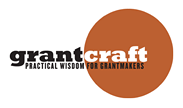Time is on our Side
January 28th, 2016
 There is a great disparity between the nonprofit organizations that provide services ranging from hunger relief to the arts, and the traditionally slower-to-act philanthropic foundations that fund them. The fastest acting organizations deliver resources immediately to those in need; the more “tortoise”-like foundations engage in diligent planning towards long-term solutions. With this pace spectrum in mind, I think that all parties would benefit by meeting each other midway to work together for longer periods of time leading up to a grant’s proposal and subsequent implementation, creating a more coordinated funder-grantee relationship that enables deeper outcomes.
There is a great disparity between the nonprofit organizations that provide services ranging from hunger relief to the arts, and the traditionally slower-to-act philanthropic foundations that fund them. The fastest acting organizations deliver resources immediately to those in need; the more “tortoise”-like foundations engage in diligent planning towards long-term solutions. With this pace spectrum in mind, I think that all parties would benefit by meeting each other midway to work together for longer periods of time leading up to a grant’s proposal and subsequent implementation, creating a more coordinated funder-grantee relationship that enables deeper outcomes.
There are real challenges to operating in this manner, but, as part of my ongoing learning and reflection on our foundation’s work, I have identified certain strategies that could help to overcome those challenges to working in tandem earlier and longer.
Grants that incorporate planning and foresight help achieve a more coordinated approach between funder and grantee, and are more likely to enable development of strategies that address potential challenges. Often, a grantseeker will present a fully fleshed out proposal to a grantmaker’s program officer or Board of Directors. If the grant is awarded, the grantmaker’s involvement only starts at that moment. Accordingly, the grantmaker’s extensive due diligence in order to determine viability, feasibility, and necessity of the undertaking often prolongs implementation of the project.
Increasingly, the Jim Joseph Foundation and potential grantees connect at the idea phase, subsequently developing a grant that incorporates both a planning and implementation phase. To do this requires several factors not always characteristic of traditional grantmaking:
Of note, the Jim Joseph Foundation board of directors awards grants that are often of four to five years. The foundation’s philanthropic strategy includes assessment or evaluation on the formative level so that there can be a continuous effort towards improvement.
An example of investment that would have benefited from a more significant, coordinated planning phase of the grant came in the early years of Jim Joseph Foundation’s grantmaking. The Foundation for Jewish Camp (FJC) approached us in 2007 with the theory that western camps receive less attention and support than their east coast peers. We recognized an opportunity to strategically fill this void. With our support, FJC launched the Teen Camper Incentive Initiative (later known as JWest Campership), a subsidy program for first time participants in Jewish overnight summer camps to attend one of 23 camps in the western U.S. JWest Campership was an opportunity to bring 3,000 new participants into Jewish overnight summer camps and provide requisite training and enhancement for seasonal staffs at those institutions. We were the sole investor in this undertaking through a four-year grant of up to $11.2 million (all Jim Joseph Foundation grants are “up to” to help ensure a grant is implemented as planned). While the initiative included startup time, it was not truly dedicated to planning. The time was more geared towards building the infrastructure of the initiative.
If JWest Campership had been a one or even two-year grant, it most likely would have been deemed a failure by the funder and the grantee, as the grant failed to achieve camper enrollment goals. An independent evaluation in year two of the grant revealed that three obstacles stood in the way of a successful future for these investments. First, the requirements dictated that eligible overnight camps be at least three weeks long. However, school schedules in the western U.S. make a three-week camp commitment difficult for many youth. A second obstacle was the time period for which the financial incentives were offered. They were offered in decreasing amounts for two years, although parents found it more compelling if the same amount of money was spread over three years. Finally, the goals for retention were taken from similar programs elsewhere in the country, not taking into account income levels and accessibility for west coast families. All of these changes were accounted for in a revised award letter in July 2009, which also included a no-cost extension of two additional years.
The end result of the grant, among other measured outputs and outcomes, was 3,342 first time campers who received JWest incentives (as opposed to a goal of 3,000) and 60% of Jewish campers who self-reported an increase in Jewish involvement in their personal lives. A key learning from this investment is that even when adapting an existing program, a planning period should be included. Thankfully, the openness of both the Jim Joseph Foundation and the Foundation for Jewish Camp allowed for the critical mid-course corrections.
But the key lesson is that these corrections might not have been necessary if appropriate time and resources had been dedicated to planning. This lesson informed how subsequent Jim Joseph Foundation grants were structured; perhaps this lesson can be the impetus for other grantmakers and grantseekers to work more closely together for extended periods of time. Both parties—and their grant beneficiaries—will be better positioned for success and long-term, positive outcomes.